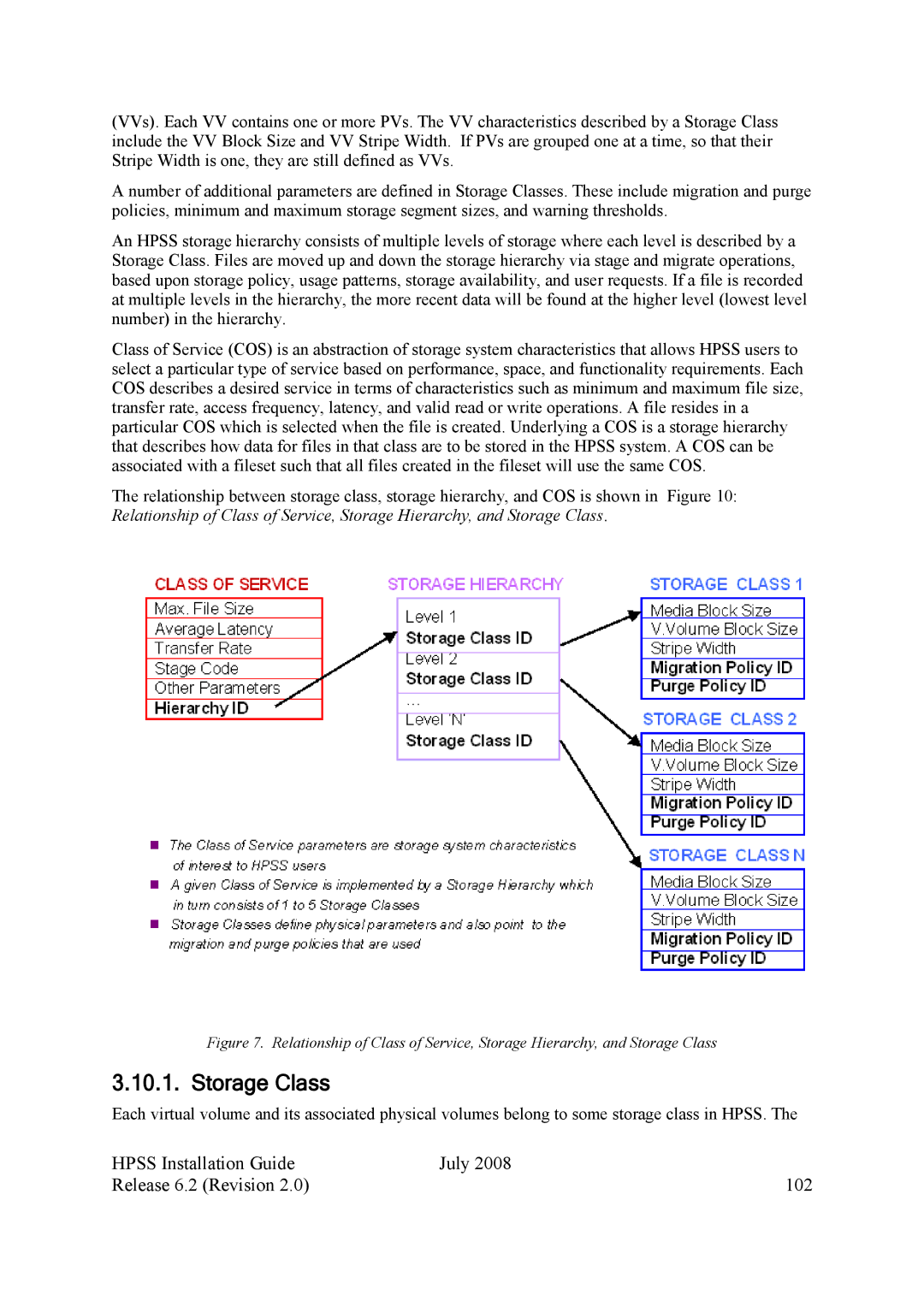
(VVs). Each VV contains one or more PVs. The VV characteristics described by a Storage Class include the VV Block Size and VV Stripe Width. If PVs are grouped one at a time, so that their Stripe Width is one, they are still defined as VVs.
A number of additional parameters are defined in Storage Classes. These include migration and purge policies, minimum and maximum storage segment sizes, and warning thresholds.
An HPSS storage hierarchy consists of multiple levels of storage where each level is described by a Storage Class. Files are moved up and down the storage hierarchy via stage and migrate operations, based upon storage policy, usage patterns, storage availability, and user requests. If a file is recorded at multiple levels in the hierarchy, the more recent data will be found at the higher level (lowest level number) in the hierarchy.
Class of Service (COS) is an abstraction of storage system characteristics that allows HPSS users to select a particular type of service based on performance, space, and functionality requirements. Each COS describes a desired service in terms of characteristics such as minimum and maximum file size, transfer rate, access frequency, latency, and valid read or write operations. A file resides in a particular COS which is selected when the file is created. Underlying a COS is a storage hierarchy that describes how data for files in that class are to be stored in the HPSS system. A COS can be associated with a fileset such that all files created in the fileset will use the same COS.
The relationship between storage class, storage hierarchy, and COS is shown in Figure 10: Relationship of Class of Service, Storage Hierarchy, and Storage Class.
Figure 7. Relationship of Class of Service, Storage Hierarchy, and Storage Class
3.10.1. Storage Class
Each virtual volume and its associated physical volumes belong to some storage class in HPSS. The
HPSS Installation Guide | July 2008 |
Release 6.2 (Revision 2.0) | 102 |
